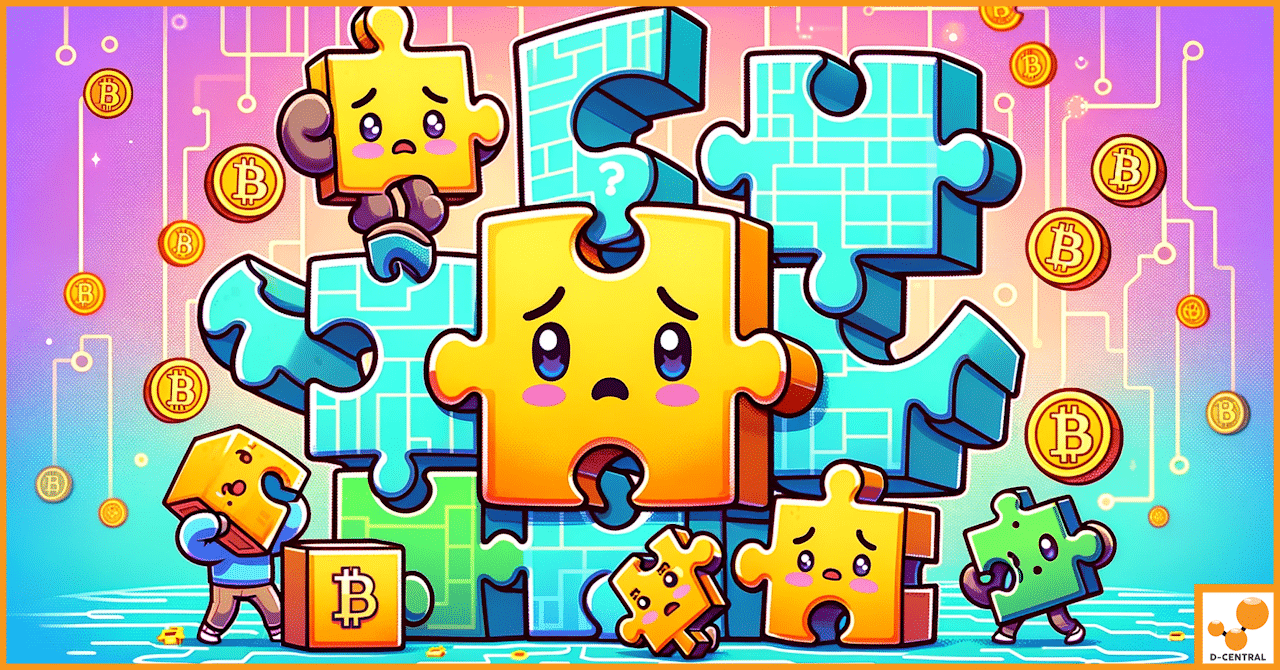
Bitcoin Equipment Repair Service: Expert Tips for Ensuring Optimal Mining Performance
Bitcoin mining, the process by which new Bitcoin transactions are verified and added to the blockchain, relies heavily on specialized
4479 Desserte Nord Autoroute 440, Laval, QC H7P 6E2

In the ever-evolving world of cryptocurrency, Bitcoin stands as the pioneering digital currency, introducing a revolutionary technology known as the blockchain. This blockchain is not just the backbone of Bitcoin; it’s a groundbreaking ledger technology that has spurred a myriad of applications across various sectors. At its core, the blockchain is a decentralized, distributed ledger that records all transactions across a network of computers. This ensures transparency, security, and immutability, as each transaction is verified by consensus of the network participants and then irrevocably recorded.
However, within this intricate system of transaction recording and block mining, there exists a phenomenon known as “orphan blocks.” Orphan blocks are blocks that are not accepted into the blockchain network due to a discrepancy in timing. They occur when two miners produce a block at a similar time, but the network only accepts one, leaving the other block ‘orphaned.’ While these blocks are valid in terms of their data and the proof of work, they are not part of the main chain. This happens because, in the Bitcoin network, only one blockchain can continue to grow, and this is determined by the chain that accumulates the most proof of work.
Orphan blocks represent an intriguing aspect of the Bitcoin mining process. They are a testament to the competitive nature of mining and the decentralized architecture of the blockchain. Understanding orphan blocks is crucial for anyone involved in the Bitcoin ecosystem, as it sheds light on the complexities and dynamics of blockchain technology. In this exploration, we delve into the nuances of orphan blocks, their impact on the network, and the ongoing efforts to mitigate their occurrence, reflecting the deep expertise and industry-leading position of D-Central Technologies in the realm of Bitcoin mining.
Orphan blocks, in the context of Bitcoin’s blockchain, are blocks that, while valid in their construction and proof of work, are not included in the main blockchain. These blocks are created when two miners solve a block at nearly the same time. The Bitcoin network, which operates on a consensus mechanism, will only accept one of these blocks, leading to the other being ‘orphaned.’ This phenomenon is a direct result of the decentralized and competitive nature of Bitcoin mining, where multiple miners across the globe attempt to add new blocks to the blockchain simultaneously.
An orphan block contains transactions and follows the same rules for creation as any other block in the Bitcoin network. However, due to the timing of its submission to the network and the subsequent acceptance of another block by a larger portion of the network, it does not become part of the longest blockchain. In Bitcoin’s protocol, the longest chain is always considered the valid one, as it represents the chain with the most accumulated proof of work.
The primary difference between orphan blocks and main blocks lies in their acceptance into the blockchain. While both types of blocks are solutions found by miners through the proof of work process, orphan blocks are not included in the longest chain of the blockchain. This exclusion is not a reflection of any error or fault in the block itself, but rather a consequence of the inherent design of the blockchain protocol, which prioritizes the longest chain as the source of truth.
Orphan blocks are akin to branches of a tree that do not continue to grow, while the main blocks are part of the trunk, continuously extending as the blockchain grows. This analogy highlights the dynamic and somewhat unpredictable nature of mining, where despite the effort and resources expended in solving a block, there is no guarantee that it will be the one added to the chain.
Understanding the concept of orphan blocks is essential for comprehending the broader mechanics of the Bitcoin blockchain. It underscores the importance of speed and network connectivity in mining, as well as the inherent risks and uncertainties miners face. Orphan blocks are a fundamental aspect of the decentralized consensus mechanism that underpins Bitcoin, illustrating both the robustness and the challenges of maintaining a distributed ledger in a decentralized network.
The creation of orphan blocks in the Bitcoin blockchain is a technical phenomenon rooted in the decentralized nature of the network. These blocks arise due to the inherent design of the blockchain and the process of mining new blocks. In Bitcoin’s proof-of-work system, miners around the world compete to solve complex cryptographic puzzles. The first miner to solve the puzzle gets the privilege to add a new block to the blockchain, along with receiving the block reward.
However, due to the distributed nature of the network and the variance in time it takes for information to propagate across the entire network, there are instances when two miners solve the puzzle almost simultaneously. This results in two valid blocks being created at the same time, but at different locations in the network. As these blocks begin to propagate through the network, a temporary divergence, or a fork, occurs in the blockchain.
Simultaneous block mining leads to a situation where different parts of the network have different perceptions of the current valid block. This divergence creates two competing chains in the network, each considered valid by different segments of the network. However, this situation is temporary. The Bitcoin protocol dictates that the chain with the most accumulated proof-of-work (i.e., the longest chain) is the valid one. As subsequent blocks are added, one of the chains becomes longer than the other, and the network eventually converges on this longer chain.
The block on the shorter chain, which is not accepted by the network as part of the longest blockchain, becomes an orphan block. The transactions within this block are not considered confirmed and are returned to the pool of unconfirmed transactions to be included in future blocks.
The Bitcoin Manual provides further insights into the dynamics of blockchain splits and block propagation. The speed at which a block is propagated across the network is crucial. Faster propagation can reduce the chances of two miners unknowingly working on the same problem at the same time, thereby decreasing the likelihood of creating orphan blocks.
Improvements in network infrastructure and protocols, such as the implementation of the Bitcoin Relay Network, have been instrumental in enhancing block propagation times. These advancements help in quickly resolving temporary forks and reducing the frequency of orphan blocks, thereby maintaining the efficiency and reliability of the Bitcoin blockchain.
In summary, the creation of orphan blocks is a natural byproduct of the decentralized and competitive process of mining in the Bitcoin network. While these blocks represent a temporary inefficiency in the system, the underlying blockchain protocol and ongoing technological improvements ensure that their impact is minimized, maintaining the integrity and continuity of the blockchain.
Orphan blocks have been a part of Bitcoin’s landscape since its inception, but their prevalence has varied over time. In the early days of Bitcoin, when the network was smaller and less congested, orphan blocks were a relatively rare occurrence. However, as Bitcoin gained popularity and the number of miners increased, the frequency of these blocks rose. This uptick was primarily due to the increased competition among miners and the lag in information propagation across an expanding network.
The historical prevalence of orphan blocks serves as a mirror to the growing pains and scaling challenges faced by the Bitcoin network. These blocks were more than just anomalies; they highlighted the need for continuous improvements in network efficiency and mining technology.
A significant milestone in the evolution of Bitcoin’s handling of orphan blocks came with the release of Bitcoin Core v0.10. As discussed on Bitcoin Stack Exchange, this version introduced a substantial change in the block download mechanism. Prior to v0.10, nodes would often keep orphan blocks that lacked a known parent block. However, the new version implemented a more efficient approach to managing blockchain data, which included improvements in handling blocks during a fork.
One of the key changes was the introduction of headers-first synchronization. This method allowed nodes to download block headers before downloading the full block, enabling them to verify the chain’s continuity more quickly and efficiently. This change significantly reduced the occurrence of orphan blocks, as it allowed nodes to better keep track of the most-work chain, thereby decreasing the likelihood of mining on an outdated chain.
The evolution of orphan blocks in Bitcoin is also a story of technological advancement. Over the years, improvements in both hardware and software have played a crucial role in reducing the frequency of orphan blocks. Faster and more efficient mining hardware has enabled quicker resolution of blocks, while advancements in network infrastructure have facilitated faster propagation of block information across the global Bitcoin network.
Additionally, the development of protocols like the Bitcoin Relay Network and FIBRE (Fast Internet Bitcoin Relay Engine) has further optimized block propagation times. These technologies work by compressing block data and using more efficient routing methods, significantly reducing the time it takes for a new block to reach the entire network. This rapid propagation helps ensure that miners are working on the latest block, thus minimizing the chances of creating orphan blocks.
In conclusion, the historical context and evolution of orphan blocks in Bitcoin reflect the network’s ongoing maturation. From being a notable challenge in the network’s early days, the issue of orphan blocks has been substantially mitigated through a combination of protocol improvements and technological advancements. This evolution underscores the resilience and adaptability of the Bitcoin network in the face of scaling challenges and technological shifts.
The occurrence of orphan blocks in the Bitcoin blockchain is influenced by several key factors, each playing a role in how these blocks are formed and how often they appear.
Discussions on platforms like Bitcoin Stack Exchange provide a statistical perspective on the occurrence of orphan blocks. By analyzing blockchain data, it’s evident that the rate of orphan blocks has seen a decline over the years, especially following key updates to the Bitcoin protocol and improvements in network infrastructure.
In summary, the creation of orphan blocks is influenced by a combination of network latency, serialization delay, and the distribution of mining power. While these factors have historically contributed to the occurrence of orphan blocks, ongoing technological advancements and protocol improvements have significantly mitigated their impact, reflecting the dynamic and adaptive nature of the Bitcoin network.
Orphan blocks, while an inherent part of the Bitcoin blockchain’s function, carry significant implications, particularly for miners. The primary impact is financial. When a block mined by a miner becomes orphaned, the miner loses the block reward and transaction fees associated with that block. This loss can be substantial, especially considering the high costs involved in mining, including electricity and hardware expenses.
From an operational standpoint, orphan blocks can affect miners’ strategies. Miners need to constantly adapt to the network’s state to minimize the chances of their blocks becoming orphaned. This necessity can lead to increased operational complexities, such as optimizing network connectivity and choosing mining pools with better block propagation rates.
The occurrence of orphan blocks also has broader implications for the health and efficiency of the Bitcoin network:
In conclusion, orphan blocks have both direct and indirect impacts on the Bitcoin network and its participants. Financially, they represent a loss for the miners who produce them. Operationally, they necessitate a continuous adaptation of mining strategies. For the network as a whole, they highlight areas for improvement in efficiency and resilience. The ongoing evolution of the Bitcoin network aims to minimize the occurrence of orphan blocks, thereby enhancing the overall health and efficiency of the blockchain.
The occurrence of orphan blocks, while inherent to the Bitcoin blockchain, can be mitigated through various technological and strategic approaches. These methods aim to enhance network synchronization and block propagation, thereby reducing the likelihood of simultaneous block mining and the resultant orphan blocks.
Experts and discussions from various sources, including technical forums and Bitcoin development communities, provide valuable insights into network synchronization and block propagation techniques:
In summary, minimizing the occurrence of orphan blocks in the Bitcoin network involves a combination of improved network infrastructure, efficient relay protocols, strategic mining practices, and continuous software upgrades. These efforts not only reduce the incidence of orphan blocks but also contribute to the overall efficiency, stability, and robustness of the Bitcoin blockchain.
In the context of Bitcoin and blockchain technology, the terms “orphan blocks” and “stale blocks” are often used interchangeably, but they refer to different concepts. Understanding the distinction between these two types of blocks is crucial for a clear comprehension of blockchain dynamics.
A common misconception is that orphan and stale blocks are the same, but as outlined, their causes and characteristics differ significantly. Orphan blocks are a result of simultaneous block production and network propagation delays, while stale blocks result from the natural process of chain reorganization within the blockchain.
It’s also important to note that in some contexts, especially in earlier Bitcoin literature and discussions, the term “orphan block” was used to describe what are now more accurately called “stale blocks.” However, as the understanding of blockchain technology has evolved, so has the terminology, leading to a clearer distinction between these two concepts.
In summary, while both orphan and stale blocks are part of the blockchain’s natural functioning, they arise from different scenarios. Orphan blocks are a result of the competitive nature of mining and network latency, whereas stale blocks are a consequence of the blockchain’s dynamic nature, where the longest chain is always considered the valid one. Understanding these distinctions is crucial for anyone involved in the Bitcoin ecosystem, as it sheds light on the complexities and dynamics of blockchain technology.
To understand the trends and implications of orphan blocks in the Bitcoin network, it’s insightful to look at statistical data. Websites like Blockchain.com provide comprehensive data and charts that can be used to analyze the frequency and occurrence of orphan blocks over time.
A statistical overview of orphan blocks provides valuable insights into the health and efficiency of the Bitcoin network. By analyzing these trends, we can appreciate the continuous improvements and adaptations that characterize the ever-evolving landscape of Bitcoin and blockchain technology.
The future of orphan blocks in the Bitcoin network is closely tied to the ongoing advancements in blockchain technology and mining practices. As the network continues to evolve, several trends and developments can be speculated upon, which may influence the occurrence and impact of orphan blocks.
Looking ahead, several speculative developments could shape the future of orphan blocks in the Bitcoin network:
The future of orphan blocks in the Bitcoin network is likely to be shaped by a combination of technological, protocol, and network developments. While it’s difficult to predict with certainty, the trend towards greater efficiency and sophistication in blockchain technology suggests that the impact of orphan blocks will continue to diminish, contributing to a more robust and efficient Bitcoin network.
The exploration of orphan blocks in the Bitcoin network reveals much about the intricacies and challenges of blockchain technology and Bitcoin mining. Understanding orphan blocks is crucial for several reasons:
The world of Bitcoin and its underlying technology is in a constant state of evolution. As the network grows and adapts, so too do the challenges and opportunities within the mining sector. The journey of orphan blocks from a common occurrence to a relatively rare event underscores this evolution. It highlights how innovation, both in terms of hardware and software, continues to drive the Bitcoin ecosystem forward.
Looking ahead, the future of Bitcoin mining appears poised for further advancements. With ongoing research and development in blockchain technology, coupled with a growing emphasis on sustainability and efficiency, the landscape of Bitcoin mining is set to evolve in ways that could further mitigate the impact of orphan blocks. This evolution not only promises to enhance the profitability and sustainability of mining activities but also contributes to the overall stability and security of the Bitcoin network.
In conclusion, orphan blocks are more than just a technical phenomenon within the Bitcoin blockchain; they are a window into the ongoing development and maturation of this groundbreaking technology. Understanding them is essential for anyone involved in the Bitcoin ecosystem, whether as a miner, developer, investor, or enthusiast. As Bitcoin continues to evolve, so too will the strategies and technologies aimed at optimizing the network and its mining processes, ensuring the continued growth and resilience of this pioneering digital currency.
DISCLAIMER: D-Central Technologies and its associated content, including this blog, do not serve as financial advisors or official investment advisors. The insights and opinions shared here or by any guests featured in our content are provided purely for informational and educational purposes. Such communications should not be interpreted as financial, investment, legal, tax, or any form of specific advice. We are committed to advancing the knowledge and understanding of Bitcoin and its potential impact on society. However, we urge our community to proceed with caution and informed judgment in all related endeavors.
Related Posts

Bitcoin mining, the process by which new Bitcoin transactions are verified and added to the blockchain, relies heavily on specialized

As cryptocurrency mining continues to grow, so does the need for robust fire safety measures. ASIC miners, while powerful and

In the vast expanse of the digital age, where every transaction, message, and click leaves a footprint, the quest for